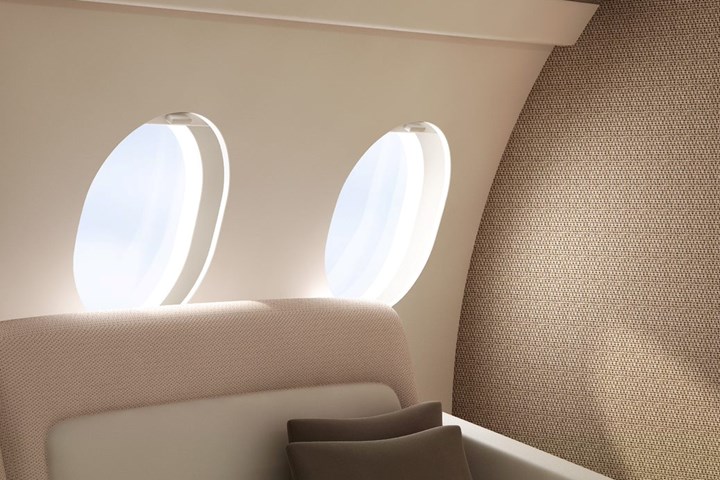CAMX 2022 exhibit preview: Culture iN
Biodegradable and VOC-free flax-based textile, Varian, offers composites manufacturers a more ecological, environmentally friendly alternative to carbon and glass fiber composites.
Culture iN (Montaigu-Vendee, France) introduces a composite textile made from flax threads and vegetable resin PLA (corn starch). The result of three years of R&D, Varian is a sustainable, bio-based materials that is used in transportation and luxury industries. It is biodegradable, VOC-free and has a positive carbon impact. Moreover, it can be cut as desired and stitched; through a simple heating process, Culture iN says slabs are molded, profiles are folded and reliefs embossed, with a variety of other possibilities available. The raw material is manufactured, dyed (GOTS label) and woven in France.
According to Culture iN, ecological concerns have resulted in a renewed interest in natural materials in the composites industry. Plant fibers such as flax are under consideration as environmentally friendly and relatively low-cost alternatives for glass fibers in structural engineering composites. However, their current use is mainly confined to reinforcement in compounded thermoplastic products similar to glass mat-reinforced thermoplastics, with primary applications including the automotive sector, and within interior and exterior components.
Flax fibers are located in the bast of the flax plant. The fibers are typically extracted by retting followed by mechanical processing (scutching and hackling). The mechanical properties of the obtained fibers are affected by the natural variability in the plant, processing and damage sustained during
processing and thus have considerable scatter, Culture iN says.
Flax has a density of 1.45, making it lighter than carbon or glass fiber. Its specific tensile strength is 875 MPa, nearly equal to glass fiber (866 MPa). Moreover, flax is characterized by a specific modulus of 38 GPa, which is 36% higher than glass fiber (28 GPa). Flax also offers properties concerning electromagnetic transparency with a lower signal attenuation and permittivity than fiberglass. With a coefficient of thermal expansion (CTE) equivalent to carbon fiber, flax can be used in tooling.
Related Content
-
Materials & Processes: Composites fibers and resins
Compared to legacy materials like steel, aluminum, iron and titanium, composites are still coming of age, and only just now are being better understood by design and manufacturing engineers. However, composites’ physical properties — combined with unbeatable light weight — make them undeniably attractive.
-
Novel dry tape for liquid molded composites
MTorres seeks to enable next-gen aircraft and open new markets for composites with low-cost, high-permeability tapes and versatile, high-speed production lines.
-
Materials & Processes: Fibers for composites
The structural properties of composite materials are derived primarily from the fiber reinforcement. Fiber types, their manufacture, their uses and the end-market applications in which they find most use are described.














